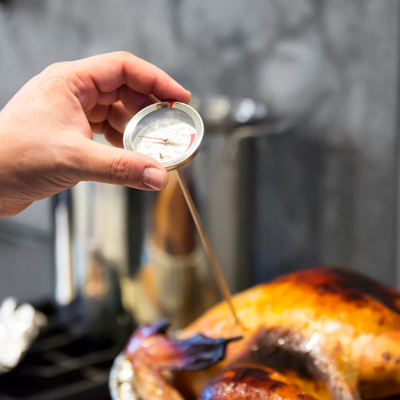
Luis Delgadillo is a Senior Public Affairs Specialist with the Food Safety and Inspection Service at the U.S. Department of Agriculture (USDA).
Thanksgiving Day is for family and friends. But Thanksgiving weekend is all about you and those amazing leftovers! But no one wants to get foodborne illness from a feast, especially if they have cancer. Before you dig in, read these tips so that you can safely store and use your leftovers.
Before you dig in, read these tips so that you can safely store and use your leftovers.
How do I safely store my leftovers?
Leftovers should be stored within 2 hours of cooking. In a recent USDA study, 76% of respondents said they would refrigerate leftovers after letting them cool to room temperature first. This is not necessary and could actually make your food unsafe. Leftovers should be placed in the refrigerator or freezer as soon as possible, even if they still have steam or heat coming off of them.
Divide leftovers into smaller portions and refrigerate or freeze them in covered shallow containers so they cool quickly. The turkey should also be portioned to ensure quick cooling in the refrigerator. A large container or whole turkey will take too long to cool down to a safe temperature, which gives bacteria a chance to multiply.
How long do the turkey and trimmings stay safe in the refrigerator or freezer?
The answer is simple: leftovers can be kept in the refrigerator for 3 to 4 days. This means that you have until the Monday after Thanksgiving to eat all those delicious leftovers or place them in the freezer to enjoy later. If you store leftovers in the freezer, they will be of best quality within 2 to 6 months.
Did you know that food can become unsafe in the refrigerator after 4 days? If you didn’t, you’re not alone. In fact, 31% of participants in our recent research indicated they would eat leftovers kept longer than this in the refrigerator. After 4 days, spoilage bacteria can cause food to develop a bad smell or taste.
For those who see themselves forgetting the Monday deadline to use or freeze leftovers, download the USDA’s FoodKeeper app, which send reminders to your smartphone or tablet. The app also includes storage guidelines for more than 600 food and drink items, tips for safe food preparation, and food product recalls. FoodKeeper is free and available for Android and Apple devices.
How should I reheat my frozen leftovers?
It is safe to reheat frozen leftovers without thawing, either in a saucepan or microwave (in the case of a soup or stew) or in the oven or microwave (for things like casseroles and one-pot meals). Reheating will take longer if the food is not thawed first, but it is safe to do when time is short.
When reheating leftovers, be sure they reach 165°F (74°C), as measured with a food thermometer. Cover leftovers when reheating. This retains moisture and ensures that food will heat all the way through. Reheat sauces, soups, and gravies by bringing them to a rolling boil.
When reheating in the microwave, cover and rotate the food for even heating. Arrange food items evenly in a covered microwave-safe glass or ceramic dish and add some liquid if needed. Be sure the covering and dish is microwave safe, and vent the lid or wrap to let the steam escape. The moist heat that is created will help destroy harmful bacteria and will ensure uniform cooking.
Also, because microwaves have cold spots, check the internal temperature of the food in several places with a food thermometer. Allow a resting time before checking the temperature.
Need more food safety information? Call the USDA Meat & Poultry Hotline at 1-888-MPHOTLINE (1-888-674-6854). You can also submit a question or chat live with a USDA food safety specialist at AskUSDA, Monday through Friday, in English or Spanish.
